Last updated on 2025-01-01
3 Series, 2nd generation compact mirrorless
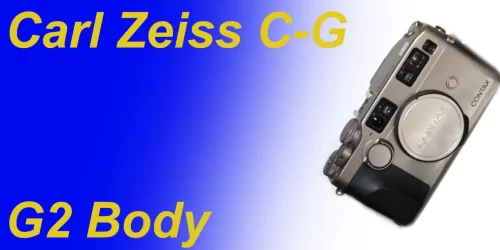
A review and photo examples of the Contax G2.
Table of contents
Gallery
Photo example
The lens is a Planar G 45mm, the film is PKR-64, and the film scanner is a DiMAGE Scan Multi PRO.
Review
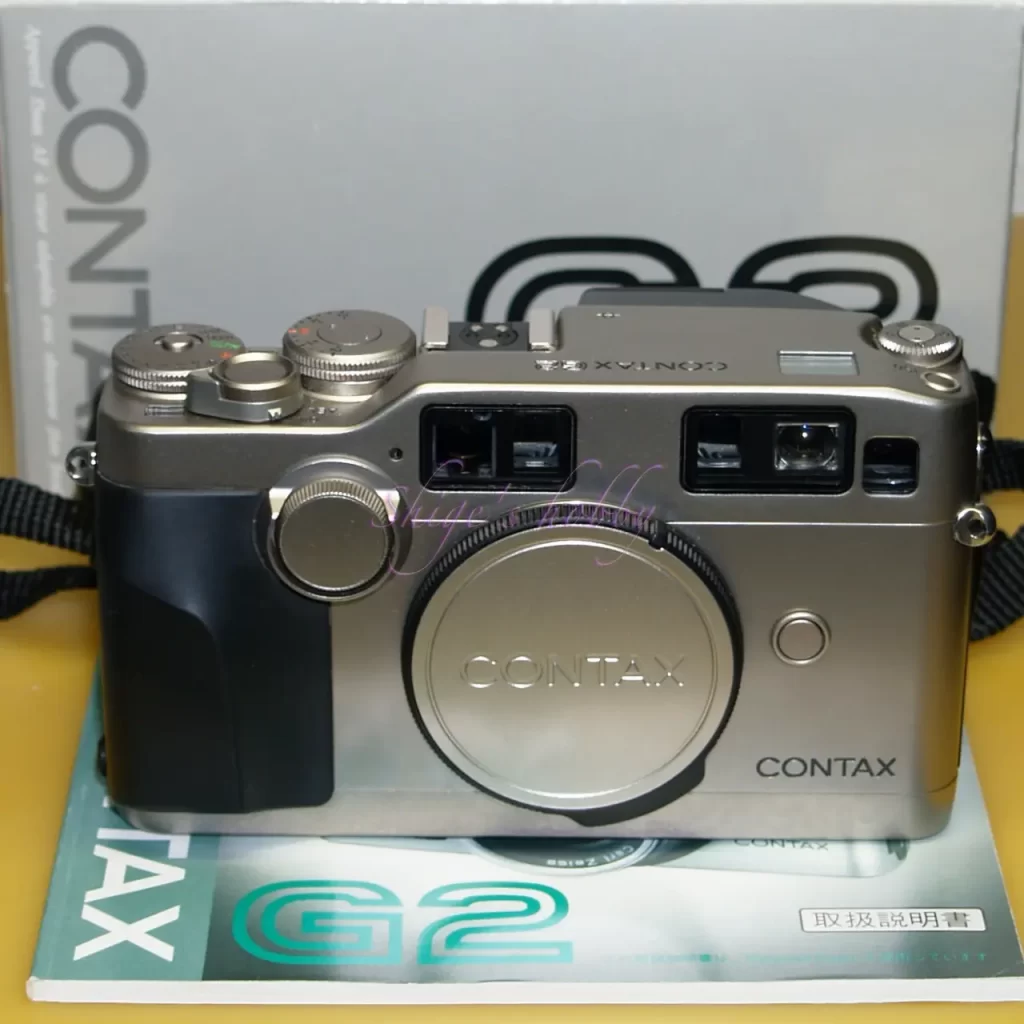
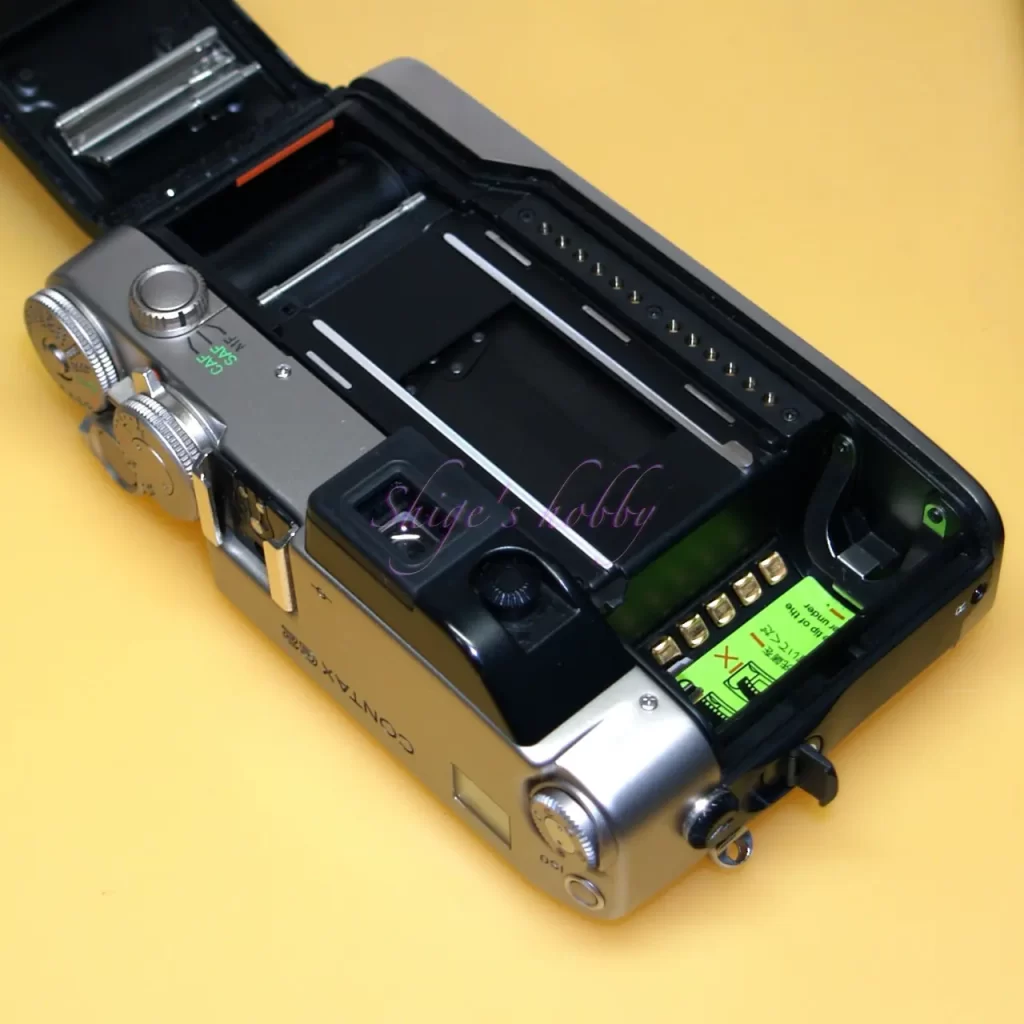
1.Overview
The Contax G2 is an autofocus (AF) 35mm film camera released by Kyocera under the Contax brand in 1996.
As its name suggests, the G2 is the successor to the Contax G1, and the main changes are improved AF focusing speed and focusing accuracy.
The number of frames shot has increased to 4 per second, and the maximum shutter speed has been increased to 1/6000.
The power source used remains the same as the G1, using two CR2-3V batteries.
2.Usage
The G2 had a focus adjustment dial diagonally above the grip, making the camera a size larger than the G1.
Thanks to improvements in AF, the G2’s focusing speed was faster than the G1’s and the focusing accuracy was improved, but even with this improvement, the focusing yield when using the Sonnar 90mm was only slightly better, and it was not a lens that could be used regularly.
When taking pictures of cats, which was the subject of the time, I often encountered shooting conditions where bushes or fences stood in front of the cat, and the tendency to focus on the fence or bushes, which had a larger contrast change than the cat I wanted to photograph, remained the same as the previous model, the G1.
Of course, I knew that the above conditions were difficult for AF, and with a SLR you could correct this with manual focus, but with the G series, the focus position could only be determined from rough distance information, and it was difficult to focus on the desired location unless the photographer had a very good sense of distance.
The focus adjustment dial on the G2 felt like a resignation to AF, and the dial was not very easy to use. I don’t like the presence of this dial, which ruins the simple design of the G1.
As for the improvement to the maximum shutter speed, since the maximum aperture of the lenses supplied was 35mm and the 35mm F2 was the brightest lens, there were no situations in which that speed could be utilized.
Since it is theoretically difficult to eliminate the weakness of not being able to visually see the current focus position through the viewfinder when shooting, this AF mirrorless camera will end with the G2 and there will be no successor to the G3.
3.Add Info.
The dedicated lenses were 16mm, 28mm, 45mm, and 90mm at the time of the G1 release, and 21mm and 35mm at the time of the G2 release, and a 35-70mm zoom lens was released shortly after that, completing the lens lineup with five lenses from 16mm to 90mm and one zoom lens.
Compared to the long history of SLR cameras, this lens lineup is a little disappointing, but if you just want to enjoy photography, this is all you need.
To make up for the thinness of the lens lineup, Yashica Contax SLR lenses can be used via the mount adapter GA-1, but since AF cannot be used when attached to this camera, it is not practical because the focus position is set by turning the focus ring on the lens side using the camera’s built-in distance measurement function.
The G2 comes in a titanium gold exterior that inherits the G1, and a black body and lens set. Lenses with black barrels are also available for the black exterior version except for the Hologon 16mm. These are manufactured in smaller numbers than the titanium gold lenses, so they are traded at high prices on the used market. I have a Biogon 28mm and a Sonnar 90mm that I have modified to M mount with black barrels.
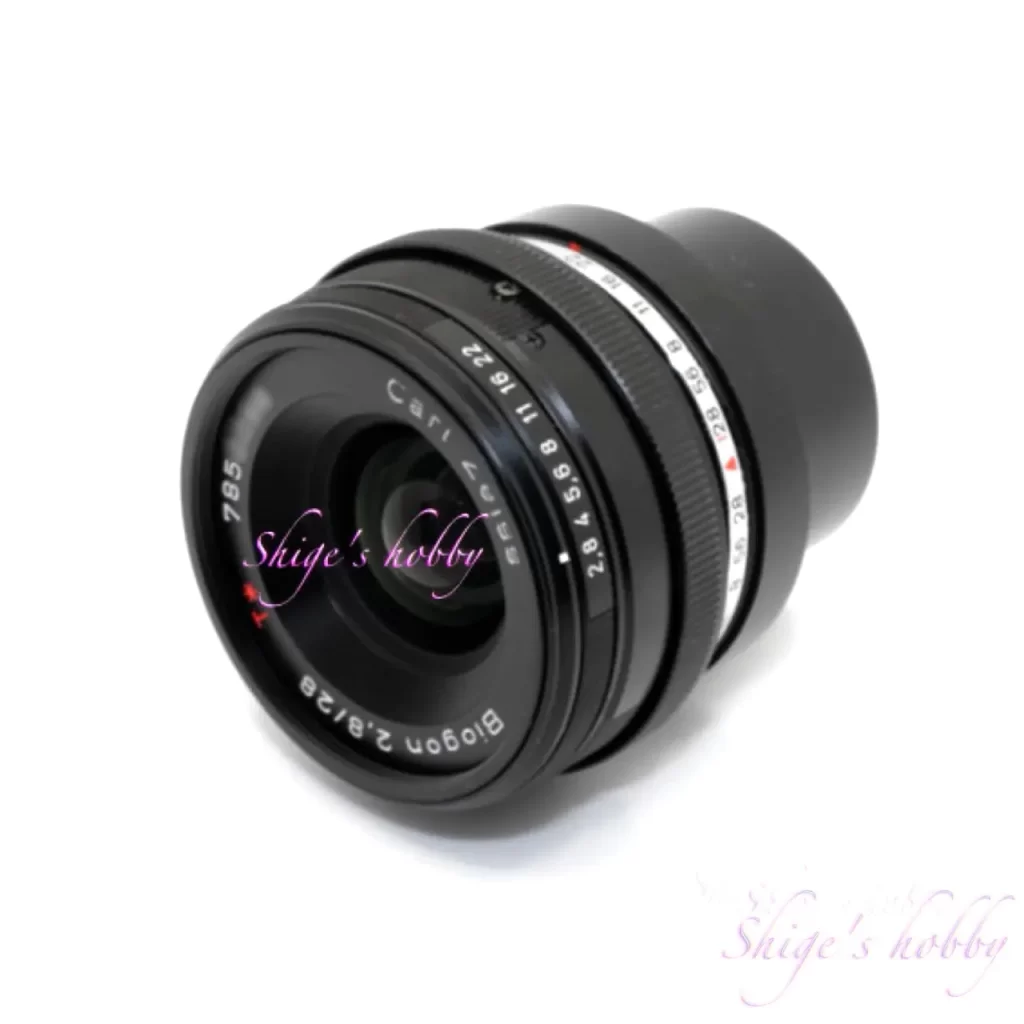
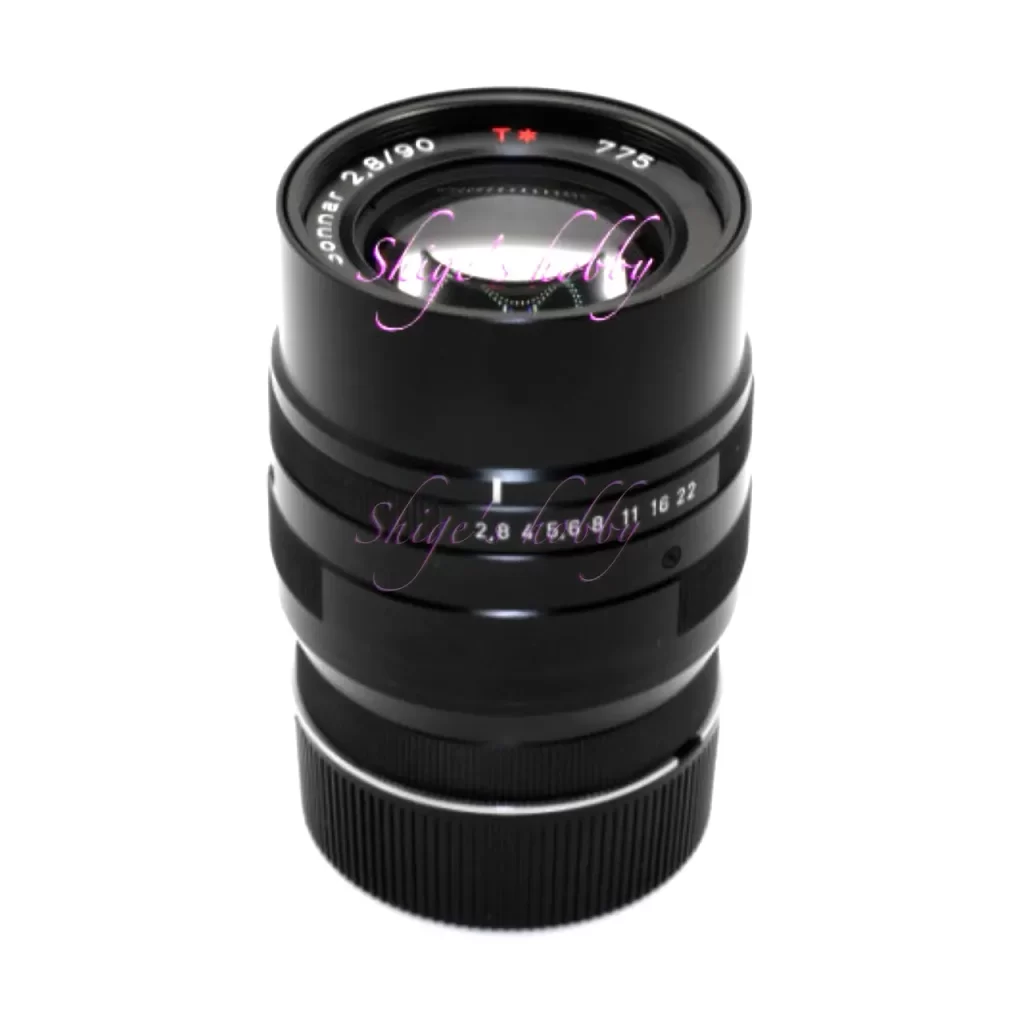
The cameras that are close to the concept of the G1 and G2 are the interchangeable lens X-Pro series and the fixed lens X100 series released by Fujifilm.
The above cameras have a configuration of a clear optical viewfinder (OVF) + electronic viewfinder (EVF) in the viewfinder section when shooting, providing an alternative when you are unsure of the results of viewfinder shooting. Another advantage of digital cameras is that you can instantly check the results of the shot by previewing them on the rear LCD.
This concept is largely due to the photographer’s hobby, and if you only consider the camera’s functions, there is almost no reason to actively use the OVF when shooting if there is a high-definition EVF. Of course, hobby is very important as a camera, and the photographer’s mood of cutting out the scenery seen through the OVF should be greatly reflected in the results of the shot.
However, adding a viewfinder OVF to a camera increases the cost compared to a camera with only an EVF, due to the increase in the number of parts and the increased difficulty of manufacturing, making the camera more expensive. In that respect, it seems that both series have succeeded in surviving in the digital camera market thanks to Fujifilm’s sales strategy that has secured their position as high-end cameras.
Even so, it will be five years since the X-Pro series was released in 2019, with the X-Pro3, in 2024. Considering that the model change from the X-Pro1 to the X-Pro2 was four years, and from the X-Pro2 to the X-Pro3 was three years, it is a long time, but since the intervals between camera releases are generally getting longer, it may be said that only five years have passed, so it will be interesting to see whether the X-Pro4 will be released in the future.
The latest X100 series with a fixed lens, the X100VI, will be released in 2024. The availability issue has been a hot topic since its release, and this, combined with the problem of scalpers, makes it clear that there is a difficulty in camera demand and supply.
Specification
| Camera name | CONTAX G1 | CONTAX G2 |
| Finder | Real-image zoom finder | ← |
| Viewfinder magnification (Infinity, 45mm, Diopter -1D) | x 0.57 | ← |
| Field of view (Infinity, 45mm, Diopter -1D) | 90% | ← |
| AF system | Passive Continuous not supported | Passive/Infrared Active Combination Continuous support |
| Continuous shooting rate | 2 frames/second | 4 frames/second |
| Shutter system | Electronically controlled, longitudinal running focal plane shutter | ← |
| Shutter Speed | 1/2000 – 16 sec (aperture priority) 1/2000 – 1 second (manual) | 1/6000 – 16 sec (aperture priority) 1/4000 – 1 second (manual) |
| Battery | CR2-3V 2本 | ← |
| Size(mm) W x H x D | 133 × 77 × 42 | 139 x 80 x 45 |
| Weight(g) | 460 | 560 |
| Price(Yen/No-tax) | ¥143,000- | ¥163,000- |
Dedicated lenses
| Focal length | Lens name | Release date |
| 16mm | HOLOGON 16mm | Year 1994 |
| 21mm | BIOGON 21mm | Year 1996 |
| 28mm | BIOGON 28mm | Year 1994 |
| 35mm | PLANAR 35mm | Year 1996 |
| 45mm | PLANAR 45mm | Year 1994 |
| 90mm | SONNAR 90mm | Year 1994 |
| 35-70mm | VARIO SONNAR 35-70 | Year 1999 |
Options
- Mounting Adaptor GA-1
- Data Back GD-1
- Power Pack Adapter GP-1
- Power Pack P-8
- Flash TLA140
- Flash TLA200
Reference links
Update history
- 2025.1.2
- 2024.1.30
Affiliate Link
- Please see the disclaimer regarding advertising here.
- Italicized links in the text are advertisement links that take you to other sites.
- Amazon Affiliate link of CONTAX
- Amazon Affiliate link of CONTAX645
- Amazon Affiliate link of CONTAXC books


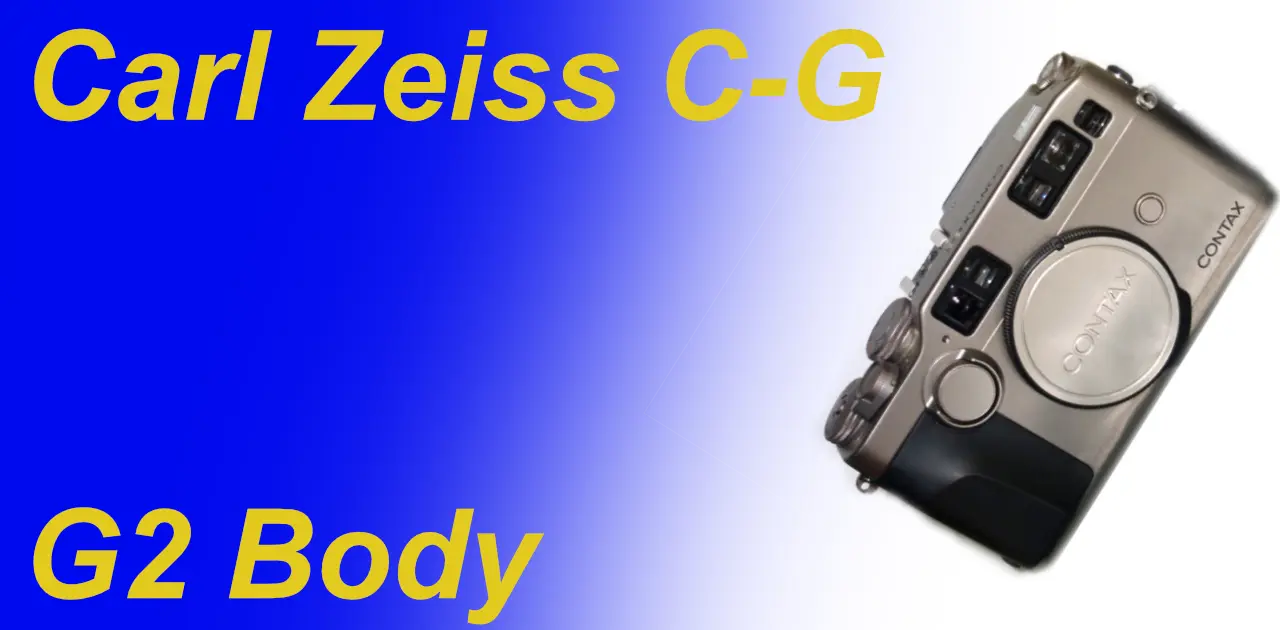

Be First to Comment